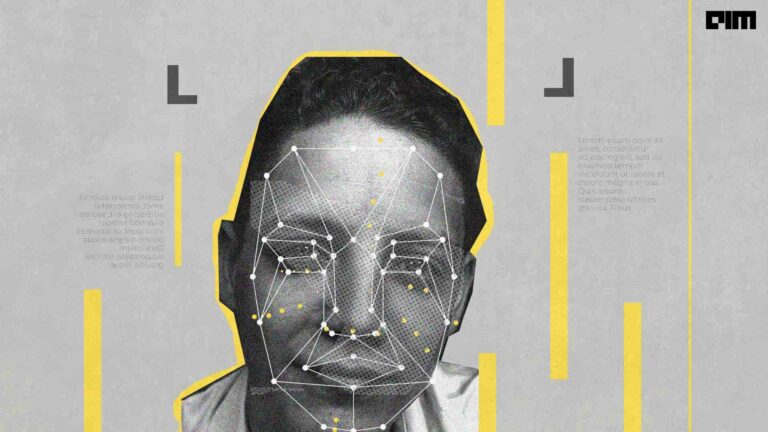|
Listen to this story
|
Do you remember the movie “Minority Report?” The movie is based on an interesting investigating crime theme in which a team of “Data scientists” with psychic abilities called PreCogs could predict future crimes by analysing massive amounts of data. The analysis of the team is sent to ‘The Pre” crime unit which then prevents the crime before it happens.
Unless you’ve been living under a rock, you’ve probably realised that some of the concepts from these far-fetched movies have come to life. And a lot of these are being applied to everyday tasks, including assisting law enforcement officers.
Although predictive policing is controversial and has been subjected to scrutiny, facial recognition, DNA technology, and machine learning algorithms are being used today by the police and investigative agencies.
Here are a few cases in which law enforcement agencies used AI/ML technologies to solve crimes and catch offenders:
Golden State Killer
The use of direct-to-consumer genetic genealogy databases, combined with AI technology, has resulted in the resolution of over 50 cold cases, ranging from missing persons to murder cases. Notably, the notorious serial killer called “Golden State Killer” was eventually apprehended after years of evading capture. Genetic databases aided in his identification and subsequent arrest, leading to the reopening and reevaluation of the 12 cases connected to him using newer DNA technology.
Joseph DeAngelo, also known as the ‘Golden State Killer,’ has pleaded guilty to multiple crimes committed in California during the 1970s and 80s. He confessed to the murder of 13 people, the rape of around 50 women, and numerous burglaries.
Genetic genealogy used in this case involves profiling the perpetrator by collecting biological material from crime scenes, such as blood or semen, and analyzing the DNA through genetic sequencing. The obtained genetic profile is then added to public DNA databases like GEDmatch, which contains DNA sequences from consumers who have taken commercial DNA tests. By searching for similar profiles among the database’s users, law enforcement can identify potential relatives of the perpetrator based on shared genetic variants.
Building on this information, investigators construct an extensive family tree using traditional genealogical methods and DNA profiles. This ‘reverse genealogy’ process involves adding relatives, starting with living individuals and extending branches to distant ancestors. The family tree helps narrow down the list of potential suspects.
Ultimately, the combination of genetic genealogy, DNA databases, and traditional investigation methods played a crucial role in identifying and bringing Joseph DeAngelo to justice for his heinous crimes.
Facial Recognition for human trafficking
In 2019, a California law enforcement officer came across a social media post regarding a missing child shared by the National Center for Missing and Exploited Children. Using a tool called Spotlight, the officer obtained a compilation of online sex advertisements involving the girl. According to a report the girl had been subjected to being “sold for weeks.” The officer’s intervention set in motion a series of actions that successfully rescued the girl and removed her from a traumatic situation.
The tool called Spotlight utilises text- and image-processing algorithms to match faces and other clues in online sex ads with other evidence. By using Amazon’s facial recognition technology, Spotlight quickly identifies online sex ads featuring missing children. Thorn has also developed another software product called Safer, which helps tech companies detect child sexual abuse images on their platforms using Microsoft’s PhotoDNA system.
The nonprofit has been successful in recovering thousands of children and identifying traffickers through their tools. Thorn recently received funding from TED’s Audacious Project, which may be used to develop technology to track child pornography on the dark web and prevent its circulation. The organisation is collaborating with the Canadian Centre for Child Protection to curtail child pornography and has been praised for its proactive approach in tackling the issue.
Subway Rice Cooker Kook
NYPD detectives employed facial recognition technology to swiftly identify a man responsible for leaving rice cookers in a subway station, causing fear among the public. They extracted still images of the suspect from security footage and compared them to mug shots in the NYPD’s arrest database using facial recognition software.
The system produced several hundred potential matches, which underwent multiple stages of human review. Within an hour, the suspect was successfully identified. Sgt. Edwin Coello, in charge of the NYPD facial recognition unit, emphasised the crucial role of this technology in cases involving potential terrorist attacks, highlighting its efficiency compared to traditional methods that relied on manual examination of videos and images.
Capital Gazette killer
In 2018, Jarrod Ramos carried out a deadly attack at the headquarters of the Capital Gazette, a newspaper based in Annapolis, Maryland. His motivation stemmed from a story the paper had published about him in 2011, which he believed was defamatory. Ramos filed a defamation lawsuit against the Capital Gazette, but it was ultimately dismissed by a judge.
Armed with a shotgun, Ramos entered the newspaper’s office and tragically killed five employees, while leaving two others critically injured. Following the attack, the Anne Arundel County Police sought to identify the killer. They obtained an image of Ramos and sent it to the Maryland Combined Analysis Center.
The Maryland Combined Analysis Center played a crucial role in identifying Ramos. They compared the image they had received to others stored in the Maryland Image Repository System, ultimately confirming Ramos as the perpetrator of the attack on the Capital Gazette.
But, Human Intervention is Vital
A few important factors to be considered when acquiring AI/ML technologies for law enforcement is that it is vital to maintain a human component in the application of these technologies. Ethical concerns arise when the human element is removed from AI, as machines lack an understanding of the complexities and nuances of constitutional rights, laws, and policies.
According to Bud Levin, an AI expert at the FBI’s Training Division, it is crucial to recognise the potential danger of removing the human element from AI. He emphasises that machines lack an understanding of the intricate and sometimes irrational aspects of the Constitution, laws, and policies.
The aim of implementing AI and ML programs should be to enhance the efficiency and effectiveness of law enforcement officers while preserving their role in protecting society. AI and ML should always be used in conjunction with humans, rather than as a substitute for them.





















































































